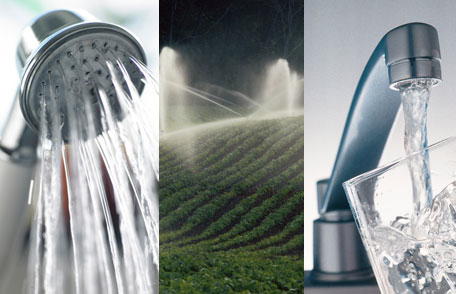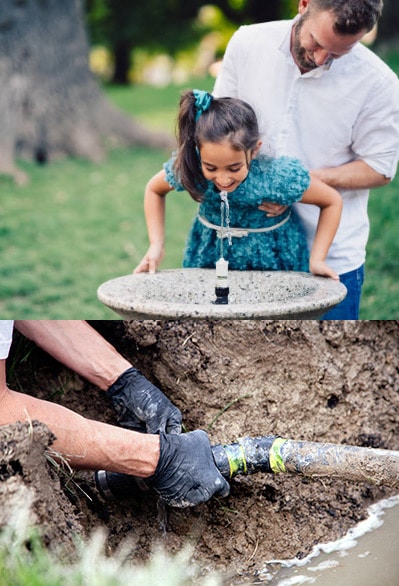Groundwater Awareness Week

Much of the water we use comes from the ground. Learn more about the importance of groundwater, the threats to its safety, and how to protect its sources during Groundwater Awareness Week.
Water is one of the world’s most precious resources. People use water every day for many activities, such as drinking, bathing, recreation, agriculture, cooling, manufacturing, and medical uses. Although water plays an essential role in everyday life, many people don’t realize that much of their water comes from the ground.
Groundwater is water found below the earth’s surface in spaces between rock and soil. Surface water is water that collects above the earth’s surface, such as streams, rivers, lakes, or oceans. Thirty percent of all the fresh water on Earth is groundwater, while the other 70% is surface water. Groundwater supplies water to wells and springs and is an important source of water for public water systems and private wells in the United States.
An estimated 145 million Americans get their tap water from a groundwater source.
National Groundwater Awareness Week, an annual observance sponsored by the National Groundwater Association (NGWA), is March 8–14, 2020. This observance highlights how important groundwater is to people’s health and the environment.
Groundwater Contamination
All groundwater sources should be protected from contamination (germs and harmful chemicals).
Protecting the safety of groundwater is an important priority for countries throughout the world, including the United States. Most of the time, U.S. groundwater is safe to use. However, groundwater sources can become contaminated with germs, such as bacteria, viruses, and parasites, and chemicals, such as those used in fertilizers and pesticides. Contaminated groundwater can make people sick.

Water infrastructure requires regular maintenance.
Groundwater sometimes contains naturally present germs and harmful chemicals from the environment, such as arsenic and radon. More often, however, human activities contaminate ground water. These human causes can include incorrect use of fertilizers and pesticides; poorly situated, constructed, or maintained septic systems; improper removal or storage of wastes; mining and construction; and chemical spills at work sites.
Contamination of groundwater systems can lead to outbreaks of disease. Previous outbreaks have occurred either because the groundwater was untreated or because of problems with water treatment. The most common germs identified in groundwater outbreaks include:
Other germs that cause outbreaks from groundwater include Cryptosporidium (a parasite), E. coli (a bacterium), and assorted viruses. From 2009 to 2017, 96 outbreaks linked to groundwater systems were reported to CDC.
You can learn more about some of the most common environmental chemicals that may be found in community water supplies by visiting CDC’s Environmental Public Health Tracking Network.
The presence of germs and harmful chemicals in our ground water can lead to health problems, including diarrhea, reproductive problems, and nervous system disorders. Infants, young children, pregnant women, the elderly, and people whose immune systems are weakened because of HIV/AIDS, chemotherapy, or transplant medicines may be more likely to get sick from certain germs and chemicals.
Concerns for groundwater contaminants led the U.S. Environmental Protection Agency (EPA) and individual states to develop regulations to protect public water systems, such as the 2006 Ground Water Rule.
Is Your Water From a Groundwater Source?
Public Water Systems
One-third of Americans — more than 102 million people — get their drinking water from public water systems that use groundwater. The EPA regulates drinking water quality in public water systems. You can find out more about your local drinking water quality and possible contaminants by viewing your Consumer Confidence Report (CCR), which most utility companies are required to provide to customers.
Private Wells
An estimated 43 million Americans get their water from private groundwater wells, which are not subject to EPA regulations. Private groundwater wells can provide safe, clean water. However, contamination that can cause sickness also can occur in well water. If you have a well, you should take steps to protect it and have the water tested annually to make sure your water is safe from harmful germs and chemicals. State and local health departments provide information to help well users protect their drinking water.























.png)











No hay comentarios:
Publicar un comentario